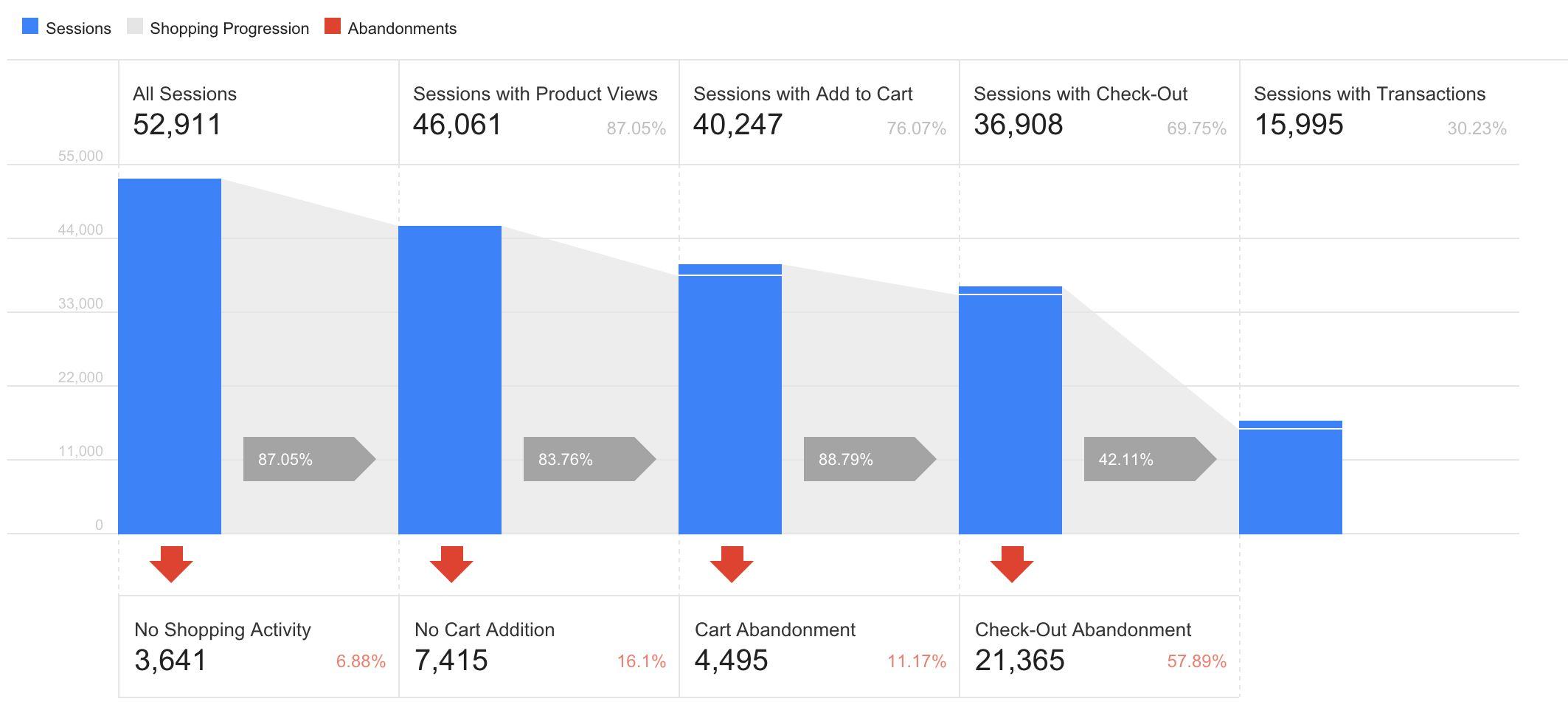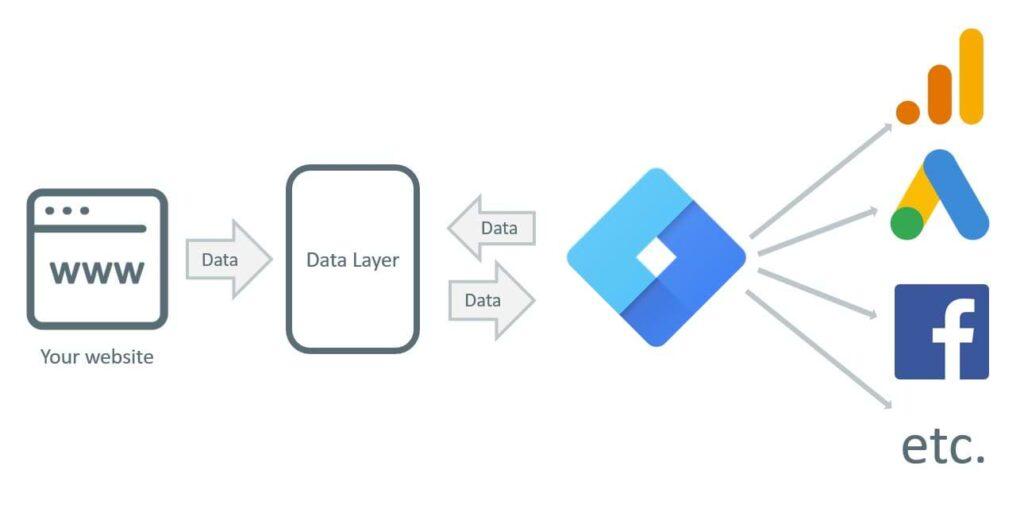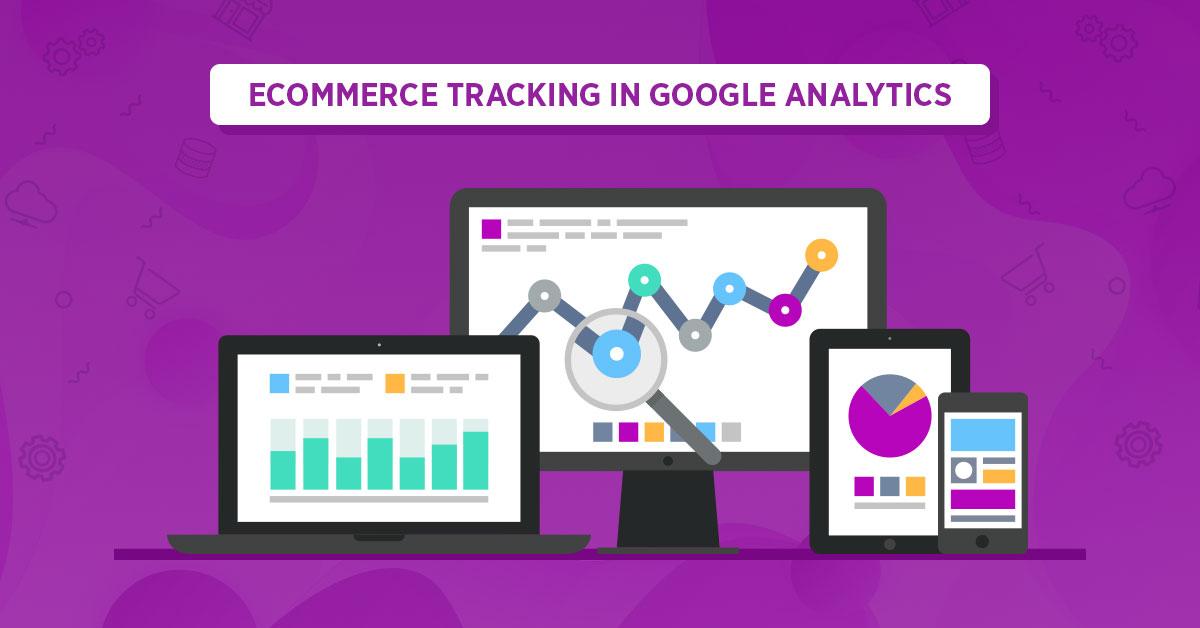In today’s digital marketplace, where every click can make or break a sale, understanding your customer’s journey is more crucial than ever. Imagine if you could unlock the secrets behind your website’s performance—knowing exactly which products captivate your audience, which marketing campaigns drive traffic, and which pages lead to conversions. This is where eCommerce tracking comes into play, and more importantly, where tag management transforms from a nice-to-have into a must-have.
If you’re still thinking of tag management as just another technical detail, think again. With the rapid evolution of online shopping habits and the increasing complexity of digital marketing strategies, mastering eCommerce tracking is no longer optional; it’s essential for staying competitive. In this article, we’ll explore why effective tag management is the cornerstone of a successful eCommerce strategy, empowering you to make data-driven decisions that elevate your business. So, let’s dive in and discover how you can harness the full potential of your eCommerce tracking to not only survive but thrive in this dynamic landscape!
Understanding the Importance of Accurate eCommerce Tracking
In the ever-evolving world of eCommerce, the ability to track user behavior accurately isn’t just a luxury—it’s a necessity. Without precise tracking, businesses risk missing out on crucial insights that can drive sales and enhance customer experience. Accurate eCommerce tracking helps you understand the full customer journey, from initial engagement to final purchase, giving you data to refine your strategies effectively.
When you implement robust tracking systems, you unlock several key benefits:
- Enhanced decision-making: Data-driven decisions lead to better marketing strategies and product offerings.
- Customer insights: Understanding customer behavior allows you to tailor experiences and increase satisfaction.
- Performance measurement: Accurately track the effectiveness of campaigns and measure ROI effectively.
- Abandoned cart analysis: Identifying why customers leave their carts can help you implement strategies to recover lost sales.
Moreover, the integration of tag management systems plays a pivotal role in this landscape. With a well-structured tagging strategy, you can manage all your tracking scripts in one place, reducing the likelihood of errors. This not only simplifies the process but also enhances data accuracy. Consider how a single misconfigured tag can lead to misleading data, ultimately skewing your insights and decisions.
| Benefit | Description |
|---|---|
| Improved Analytics | Access to detailed insights on customer interactions. |
| Increased Conversions | Data-driven strategies can enhance sales and customer retention. |
| Streamlined Processes | Efficient tag management saves time and reduces errors. |
As the digital marketplace grows, so does the competition. Accurate tracking not only sets you apart but also acts as the backbone for every successful eCommerce strategy. With the right tools and systems in place, you can transform raw data into actionable insights, ensuring your business thrives in this competitive environment. Embracing accurate eCommerce tracking is no longer optional; it’s an essential component for sustainable growth and success.
The Role of Tag Management in Streamlining Your Data Collection
In today’s fast-paced eCommerce landscape, the ability to collect, analyze, and act on data is critical for success. Tag management systems (TMS) emerge as essential tools that simplify the complex web of data tracking across multiple platforms. By centralizing the management of various tracking codes, a TMS allows businesses to focus on interpreting data rather than getting bogged down by the technicalities of implementation.
With a TMS, you can:
- Enhance Agility: Quickly add, edit, or remove tags without the need for extensive coding, making your site more responsive to changes.
- Improve Accuracy: Reduce human error associated with manual code updates, ensuring more reliable data collection.
- Streamline Compliance: Simplify data privacy management by controlling which data is collected, helping you stay compliant with regulations.
Moreover, a robust tag management system integrates seamlessly with various analytics tools, providing a unified view of customer interactions across channels. This integration means that you can track user behavior, conversions, and other critical metrics more effectively, leading to more informed decision-making. Imagine being able to test new marketing strategies without extensive delays or complications—tag management makes that a reality.
| Benefits of Tag Management | Impact on Data Collection |
|---|---|
| Centralized Control | Manage all tags from one location for better oversight. |
| Faster Deployment | Implement tracking solutions quickly to capitalize on marketing opportunities. |
| Enhanced Performance | Optimize site speed and performance by reducing the number of tags loaded on pages. |
adopting a tag management strategy is not just about improving your current processes; it’s about preparing for the future. As eCommerce continues to evolve, so too will the methods of data collection and tracking. Investing in a TMS equips your business with the flexibility and scalability needed to adapt to ongoing changes in the digital landscape. Without it, you risk falling behind competitors who are leveraging these tools to drive their growth.

Common Challenges in eCommerce Tracking and How to Overcome Them
eCommerce tracking is a critical component of any online business strategy, yet many organizations face hurdles that can impede their success. One major challenge is the fragmentation of data across multiple platforms. With consumer interactions occurring on various devices and channels, tracking customer journeys becomes a maze. Without a unified view, businesses often miss key insights that could enhance their marketing efforts.
Another common issue is inaccurate data collection. When tags are improperly implemented or not updated, businesses risk collecting misleading information that can lead to poor decision-making. It’s essential to regularly audit your tag management system to ensure that all tags function correctly and conform to the latest data privacy regulations.
To address these challenges, adopting a robust tag management system (TMS) can streamline processes and improve accuracy. A TMS allows you to manage all your tracking codes in one place, reducing the risk of errors and making it easier to deploy new tags as needed. Here’s how a TMS can help:
| Benefits of Using a TMS | Description |
|---|---|
| Simplified Management | Centralizes tag deployment, reducing reliance on IT teams. |
| Enhanced Accuracy | Minimizes human error by automating tag updates and version control. |
| Real-Time Data | Enables quick adjustments to tracking strategies based on real-time analytics. |
Furthermore, businesses must prioritize data integration with other marketing tools. By ensuring that your eCommerce platform, CRM, and analytics tools work in harmony, you gain a comprehensive view of customer behavior. This synergy allows for more effective retargeting campaigns and personalized marketing, ultimately driving higher conversions.
Lastly, investing in education and training for your team cannot be overlooked. As eCommerce tracking technologies evolve, staying informed about the latest tools and best practices ensures that your team maximizes the potential of your tracking efforts. Hosting workshops or webinars can foster a culture of continuous learning and adaptation.
Choosing the Right Tag Management System for Your Business
When it comes to selecting a tag management system (TMS) for your business, the right choice can significantly impact your eCommerce tracking capabilities. A well-implemented TMS not only streamlines the process of managing tags but also enhances your ability to gather and analyze valuable data. Here are some key factors to consider:
- User Experience: The interface should be intuitive and user-friendly, allowing team members at all levels to navigate easily.
- Integration Capabilities: Ensure that the TMS seamlessly integrates with your existing tools, such as analytics platforms, marketing automation, and CRM systems.
- Support and Community: A robust support system and an active user community can be invaluable when troubleshooting or seeking best practices.
- Security Features: Given the sensitive nature of data, your TMS should prioritize security, offering features like access controls and data encryption.
Evaluating different TMS options based on these criteria will help you find one that not only meets your current needs but also scales with your business growth. Additionally, consider the flexibility of the system. As your marketing strategies evolve, you need a TMS that can adapt to new requirements swiftly.
Another essential aspect to consider is the cost structure. Some TMS solutions charge based on the number of tags or monthly usage, while others offer flat-rate pricing. Understanding these models will help you foresee future costs as your tagging needs expand. Below is a simple comparison table to illustrate common pricing structures:
| Tag Management System | Pricing Model | Key Features |
|---|---|---|
| System A | Flat-rate | Unlimited tags, Extensive support |
| System B | Pay-per-tag | Advanced features, Limited support |
| System C | Tiered pricing | Custom integrations, Analytics tools |
By carefully weighing these factors and focusing on your specific business needs, you can choose a tag management system that not only simplifies your tracking efforts but also empowers you to make data-driven decisions. Remember, a well-chosen TMS can be a game changer in your quest for mastering eCommerce tracking.
Setting Up Your Tag Management System: Key Steps for Success
Implementing a tag management system (TMS) is a critical step in harnessing the power of data for your eCommerce business. A well-structured TMS can streamline your tracking processes and provide deeper insights into customer behavior. Here are some essential steps to ensure you set up your TMS for maximum impact:
- Define Your Goals: Before diving into technical setup, clarify what you want to track. Are you looking to monitor conversions, user interactions, or engagement rates? Having specific objectives will guide your tagging strategy.
- Choose the Right Platform: Evaluate different TMS options available in the market. Consider factors like user-friendliness, compatibility with other tools, and support features. Platforms like Google Tag Manager are popular for their flexibility and ease of use.
- Implement a Data Layer: A data layer acts as a bridge between your website and the TMS, ensuring accurate data collection. Define the variables you want to track and standardize the data format to avoid inconsistencies.
- Configure Tags and Triggers: Set up tags based on your defined goals. Use triggers to specify when these tags should fire. For example, you might create a tag that fires when a user completes a purchase, sending relevant data to your analytics platform.
- Test and Validate: Before going live, rigorously test your tags to ensure they work as intended. Utilize preview and debug modes within your TMS to identify any potential issues, making adjustments as necessary.
- Regularly Review and Optimize: Setting up your TMS is just the beginning. Keep an eye on performance and make changes based on the analytics data you collect. Regular audits will help identify underperforming tags or new opportunities for tracking.
By following these steps, you can create a robust tagging framework that not only captures essential data but also enhances your overall marketing strategy. Remember, the digital landscape is ever-evolving, and your approach to tag management should be equally adaptive to meet changing business needs.

Essential Tags Every eCommerce Store Should Implement
Implementing essential tags in your eCommerce store is crucial for gaining insights into customer behavior and optimizing your marketing efforts. Tags serve as the backbone of your data collection strategy, enabling you to track various metrics from traffic sources to conversion rates. Here are some vital tags that every eCommerce store should consider integrating:
- Google Analytics Tag: This tag is fundamental for tracking website traffic and user behavior. It provides deep insights into how visitors interact with your site, helping you make informed decisions.
- Facebook Pixel: If you’re running Facebook ads, the Facebook Pixel tag is essential. It allows you to measure the effectiveness of your ads by tracking conversions and optimizing future campaigns based on user behavior.
- Enhanced E-commerce Tracking: This feature within Google Analytics provides detailed insights into product impressions, click-throughs, and sales funnels, giving you a comprehensive view of your eCommerce performance.
- Remarketing Tags: These tags enable you to re-engage visitors who have previously interacted with your site. By showing targeted ads to these users, you increase the chances of conversions.
- Conversion Tracking Tags: Essential for understanding which campaigns lead to actual sales. By tracking conversions accurately, you can identify your most effective marketing channels and allocate resources accordingly.
As you implement these tags, consider using a tag management system (TMS) to streamline the process. A TMS allows you to manage all your tags from a single interface, reducing the risk of errors and ensuring that you can quickly deploy new tags as needed. This agility is essential in the fast-paced world of eCommerce, where market dynamics can change rapidly.
Additionally, testing and optimizing your tags can lead to even better results. Regularly review the data collected to ensure that your tags are functioning correctly and delivering the insights you need. If a tag isn’t yielding useful data, don’t hesitate to adjust or replace it. Your ability to adapt will keep you ahead of the competition.
| Tag Type | Benefits | Best Use Case |
|---|---|---|
| Google Analytics | Detailed traffic insights | Overall site performance measurement |
| Facebook Pixel | Conversion tracking from ads | Social media campaigns |
| Remarketing | Re-engage lost prospects | Targeted ad campaigns |
| Enhanced E-commerce | In-depth product insights | Product performance evaluation |

Analyzing Your Data: Turning Insights into Actionable Strategies
In the fast-paced world of eCommerce, data is your most valuable asset. With the right tracking tools, you can glean insights that not only help you understand customer behavior but also refine your marketing strategies. This isn’t just about collecting data; it’s about leveraging it in a way that fuels growth and drives sales.
Establish Clear Goals: Before diving into data analysis, it’s essential to establish what you want to achieve. Are you looking to increase conversion rates? Improve customer retention? By defining your objectives, you can tailor your tracking efforts and focus on the metrics that matter most. Consider the following:
- Customer acquisition costs
- Average order value
- Cart abandonment rates
Segment Your Audience: Not all customers are created equal. By segmenting your audience based on their behavior and preferences, you can create targeted strategies that resonate. Use tags to categorize users, allowing for personalized marketing efforts that can enhance engagement. This can include:
- Demographic information
- Purchase history
- Browsing behavior
Act on Insights: The real power of data lies in your ability to act on it. Use the insights gained from your analysis to inform your decisions. For instance, if you notice a high bounce rate on a specific product page, it may be time to rethink your design or improve your product descriptions. Implement A/B testing to see what variations lead to better outcomes.
Utilize Tag Management Systems (TMS): A robust tag management solution simplifies the process of managing various tracking codes and pixels. This not only saves time, but also reduces the risk of errors that can lead to lost data. A well-implemented TMS allows for:
- Faster deployment of marketing tags
- Improved website performance
- More comprehensive data collection
| Metric | Before TMS | After TMS |
|---|---|---|
| Page Load Time | 5s | 2s |
| Data Collection Accuracy | 70% | 95% |
| Deployment Time for New Tags | Days | Hours |
Transforming insights into actionable strategies requires a keen understanding of your data. By employing tag management, you not only streamline operations but also empower your marketing efforts. The result? A data-driven approach that positions your eCommerce business for sustained success.

Enhancing User Experience Through Effective Tracking
In the competitive landscape of eCommerce, understanding user behavior is paramount. Effective tracking not only allows businesses to decipher patterns but also helps in tailoring experiences to meet specific customer needs. By implementing a robust tag management system, companies can streamline their tracking efforts and gain valuable insights into user interactions. This, in turn, enhances the overall experience for visitors who expect seamless navigation and personalized offerings.
When it comes to tracking, accuracy is key. A well-structured tagging approach ensures that every interaction on your site is monitored without the clutter of redundant data. Consider the following:
- User Engagement: Track how users interact with your site’s features, such as buttons, forms, and menus.
- Conversion Rates: Monitor which actions lead to sales, enabling you to fine-tune your marketing strategies.
- Customer Journey: Understand the path users take from entry to exit, revealing potential areas for improvement.
Moreover, a tag management system facilitates real-time data collection, allowing businesses to make swift adjustments based on user behavior. Imagine launching a campaign and being able to immediately see its impact on user activity. This level of responsiveness is critical for maintaining user interest and satisfaction, ensuring your offerings remain relevant and engaging.
Table data can help visualize the benefits of effective tracking. Here’s a simple breakdown of improvements that can be expected with a solid tracking strategy:
| Tracking Focus | Expected Improvement |
|---|---|
| Website Loading Speed | 20% Increase in Engagement |
| Personalized Recommendations | 15% Increase in Conversion |
| Checkout Process Optimization | 30% Reduction in Abandonment Rate |
By harnessing the power of effective tracking, businesses can create a feedback loop that not only informs product development but also enhances marketing strategies. The insights gained from user data enable brands to speak directly to their audience, crafting messages that resonate and ultimately drive sales. The future of eCommerce lies in mastering these insights, making tag management an indispensable tool for any serious player in the online market.

Keeping Your Tags Organized: Best Practices for Long-Term Success
In the fast-paced world of eCommerce, having a robust tag management strategy is paramount for tracking performance accurately and efficiently. One of the key elements to mastering this strategy is keeping your tags organized. By implementing a few best practices, you can ensure that your tags not only serve their purpose but also contribute to long-term success.
Establish a Tag Naming Convention
A clear and consistent naming convention is crucial for effective tag management. Consider the following when creating your system:
- Clarity: Use descriptive names that explain the tag’s purpose.
- Consistency: Stick to a specific format across all tags, including the use of lowercase letters, underscores, or dashes.
- Versioning: If a tag is updated, include version numbers to avoid confusion.
Maintain a Centralized Documentation
Documentation serves as the backbone of your tag management system. Keep a centralized repository that includes:
- Tag List: A comprehensive list of all active tags with their purposes and firing conditions.
- Changes Log: Record any modifications made to tags, including creation, updates, or deletions.
- Owner Information: Specify who is responsible for each tag to facilitate accountability.
Regular Audits and Clean-Up
Over time, tags can accumulate rapidly, leading to confusion and potential performance issues. Schedule regular audits to:
- Identify Redundant Tags: Remove any tags that are no longer in use to streamline performance.
- Check for Errors: Ensure all tags are firing correctly and are linked to the appropriate events.
- Update Documentation: Revise your documentation post-audit to reflect the current status of your tags.
| Tag Type | Purpose | Frequency of Use |
|---|---|---|
| Pageview Tag | Tracks pageviews across your site | Every visit |
| Event Tag | Monitors specific user interactions | Variable |
| Ecommerce Tag | Tracks purchase transactions | Per transaction |
By adopting these best practices, you’ll not only enhance the effectiveness of your tracking efforts but also set your eCommerce business on the path to sustained success. Remember, an organized tag management system is not just a nice-to-have; it’s a necessity in today’s competitive eCommerce landscape.

Future-Proofing Your eCommerce Tracking: What to Watch For
As eCommerce continues to evolve, staying ahead of tracking technologies is crucial for maintaining a competitive edge. The landscape of digital analytics is rapidly changing, and it’s vital to anticipate what’s coming next.
Here are some key factors to keep an eye on:
- Privacy Regulations: With increasing data protection laws, such as GDPR and CCPA, you must ensure that your tracking methods comply with these regulations. Utilizing consent management platforms can be a great way to navigate this landscape.
- First-Party Data Collection: As third-party cookies become a thing of the past, emphasis on collecting and leveraging first-party data will be paramount. This shift allows for more personalized user experiences while retaining compliance with privacy standards.
- Cross-Device Tracking: Consumers interact with brands across multiple devices. Future tracking solutions should seamlessly integrate data from various platforms to create a unified view of customer behavior.
- AI and Machine Learning: These technologies are set to revolutionize how we analyze eCommerce data. Implementing AI-driven analytics tools can help you gain deeper insights and make more informed decisions.
- Real-Time Data Access: Speed is essential in today’s fast-paced market. Ensure your tracking strategy allows for real-time data access, enabling you to make quick adjustments to campaigns and improve customer experiences.
Let’s break down the technologies and strategies you’ll need to focus on:
| Technology/Strategy | Description | Impact |
|---|---|---|
| Consent Management | Tools to manage user consent for data tracking | Enhanced compliance with legal standards |
| Data Management Platforms | Centralized spaces for organizing first-party data | Improved targeting and personalization |
| Attribution Modeling | Techniques for understanding customer journeys | More effective marketing strategies |
Incorporating these elements into your eCommerce tracking strategy will not only help you adapt to future changes but also ensure that you are prepared for the unforeseen challenges that lie ahead. Investing in the right tools and methodologies will pave the way for a more robust tracking setup that can withstand the test of time.
Frequently Asked Questions (FAQ)
Q&A: How to Master eCommerce Tracking: Why Tag Management Is No Longer Optional
Q1: What is eCommerce tracking, and why is it important?
A1: eCommerce tracking is the practice of collecting and analyzing data from online transactions to gain insights into customer behavior, sales performance, and marketing effectiveness. It’s essential because it allows businesses to understand what’s working and what isn’t in their marketing strategies. Without proper tracking, you’re essentially flying blind—you won’t know how to optimize your campaigns or improve the customer experience.
Q2: How does tag management fit into eCommerce tracking?
A2: Tag management is the process of managing and deploying various tracking codes (or tags) on your website. Think of it as the brain behind your eCommerce tracking efforts. A tag management system (TMS) allows you to easily add, edit, or remove tags without needing extensive coding knowledge. This flexibility not only saves time but also ensures that your tracking is accurate and up to date—both crucial for making informed business decisions.
Q3: Why is tag management no longer optional for eCommerce businesses?
A3: In today’s fast-paced digital landscape, every moment counts, and so does every piece of data. As eCommerce continues to grow, the complexity of tracking user interactions increases. Manual tag management can lead to errors, slow loading times, and missed opportunities. By implementing a tag management system, you simplify the process, improve site performance, and gain real-time insights—all of which are vital for staying competitive.
Q4: What are the benefits of using a Tag Management System (TMS)?
A4: The benefits of a TMS are numerous! First, it allows for seamless collaboration among marketing, IT, and analytics teams. Second, it improves site speed by consolidating tags, which can lead to better user experience and lower bounce rates. Third, it enhances data accuracy and reduces the risk of human error. a TMS enables rapid deployment of new marketing initiatives, giving you the agility to respond to changing market conditions and customer needs.
Q5: Can you share a success story of a business that benefited from tag management?
A5: Absolutely! Consider a mid-sized online retailer that struggled with tracking customer interactions accurately. After implementing a TMS, they were able to streamline their tracking setup, leading to a 30% increase in conversion rates within just a few months. By using the insights gained from accurate data, they optimized their marketing campaigns, targeted specific customer segments more effectively, and ultimately improved their ROI. This is just one example of how the right tools can make a significant difference.
Q6: How can a business get started with tag management?
A6: Getting started with tag management is easier than you might think! First, choose a reliable tag management system that fits your needs—Google Tag Manager is a popular choice due to its user-friendly interface and robust features. Next, conduct an audit of your current tags to identify what you need to track. start small—implement the most essential tags first, and gradually expand your tracking capabilities as you become more comfortable with the system. Remember, the goal is to continuously refine your tracking to improve your eCommerce strategy.
Q7: What common mistakes should businesses avoid when implementing tag management?
A7: Great question! One common mistake is overcomplicating the setup. Keep your tag structure simple and organized to make it easier to manage. Another pitfall is neglecting regular audits—your tracking needs can change, and regular checks ensure everything is functioning correctly. Lastly, don’t ignore the importance of training your team. Make sure everyone involved understands how to use the TMS effectively to maximize its potential.
Q8: Any final thoughts for those looking to master eCommerce tracking?
A8: If there’s one takeaway, it’s this: in the world of eCommerce, data is your best friend. Mastering eCommerce tracking through effective tag management isn’t just a nice-to-have; it’s a must-have for any business looking to thrive in a digital marketplace. Embrace the tools available to you, stay agile, and watch as your insights transform your strategy and boost your bottom line. You’ve got this!
Wrapping Up
mastering eCommerce tracking is not just a nice-to-have—it’s an absolute necessity in today’s digital marketplace. As we’ve explored, effective tag management empowers you to gather invaluable insights about your customers, streamline your marketing efforts, and ultimately drive better results for your business.
Gone are the days of scrambling to piece together fragmented data; with the right tag management strategy in place, you’ll have a comprehensive view of your online performance at your fingertips. Remember, every click, every interaction, and every purchase tells a story—are you ready to listen?
Now is the time to take action. Invest in a robust tag management solution that suits your unique needs. Embrace the power of data-driven decisions and watch your eCommerce venture thrive. Your customers are waiting, and with the right tools, you’ll be ready to meet them where they are. So, let’s get tracking and unlock the full potential of your online business!

